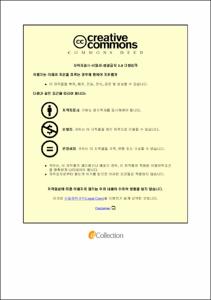고주파 해동이 동결 어류의 물리화학적 특성에 미치는 영향
- Abstract
- Freezing is one of the most important preservation technologies, especially for marine fishes because of their high susceptibility to spoilage. Thawing is a common and essential part of frozen fishery products for processing as food material. But inappropriate thawing process affects the texture and taste of fish muscle. Radio frequency thawing (RFT) is a new technology that provides uniform thawing to the entire part of the frozen product using frictional heat by rotation-vibration motion among the molecules. The movement of the energy is provided by the electro-magnetic wave in a conductor. This is known as a high speed and high quality thawing method comparing to conventional natural thawing (NT). But there is very limited research work has been done for using RFT to apply in frozen fish processing. The objective of this study was to measure and evaluate the advantage and quality parameters of RFT compared with NT on commonly consumed marine fishery products in Korea namely: Spanish mackerel (Scomberomorus niphonius), mackerel (Scomber japonicus), Alaska pollock (Gadus chalcogramus, formerly Theragra chalcogramma), croceine croaker (Larimichthys crocea) and squid (Doryteuthis bleekeri). Different physico-chemical and biological parameters such as temperature change, water holding capacity, drip loss, extractive-nitrogen, viable cell count, coliform count, acid value and peroxide value of RFT and NT treated samples were measured. Thawing time at appropriate temperature was 2 ~ 3 hours in RFT where as it was 24 hours in NT. Expressible drip loss was 2.25 ± 1.06% and 4.42 ± 1.80% by RFT and NT respectively. RFT showed higher values of extractive-nitrogen content of 392.16 ± 42.10 mg/100 g than NT of 315.30 ± 42.07 mg/100 g. Viable cell and coli form were counted 102 CFU/g to 104 CFU/g and 102 CFU/g in case of RFT whereas the values were 103 CFU/g to 105 CFU/g and 104 CFU/g in case of NT products. The acid value and peroxide values were found 7.89 ± 4.78 mg KOH/g and 14.04 ± 3.71 meq/kg, 9.86 ± 4.52 mg KOH/g and 27.87 ± 5.56 meq/kg for RFT and NT respectively. This result demonstrated higher thawing quality of RFT than NT. So, RFT is expected to play a major role in thawing frozen fish for high quality fishery products development.
- Issued Date
- 2016
- Awarded Date
- 2016. 8
- Type
- Dissertation
- Publisher
- 부경대학교 대학원
- Affiliation
- 부경대학교 대학원
- Department
- 대학원 식품공학과
- Advisor
- 조영제
- Table Of Contents
- 서 론 3
재료 및 방법 6
1. 실험재료 6
1. 1. 국내 주요 소비어종 6
2. 실험방법 6
2. 1. 온도변화 측정 및 온도분포도 6
2. 2. 보수력 측정 7
2. 3. 드립생성량 측정 7
2. 4. 함질소 엑스분 함량 측정 7
2. 5. 생균수, 대장균수 측정 8
2. 6. 산가, 과산화물가 8
2. 7. 휘발성 염기질소 8
2. 8. 통계분석 9
결과 및 고찰 10
1. 자연해동을 통한 해동된 어류의 품질평가 10
2. 고주파해동으로 해동된 수산물의 품질평가 24
3. 해동 어류의 품질유지를 위한 포장법 개발 42
4. 고주파해동을 실시한 수산물의 재동결에 의한 품질변화 55
요 약 63
참고문헌 68
- Degree
- Master
- Files in This Item:
-
-
Download
 고주파 해동이 동결 어류의 물리화학적 특성에 미치는 영향.pdf
기타 데이터 / 947.53 kB / Adobe PDF
고주파 해동이 동결 어류의 물리화학적 특성에 미치는 영향.pdf
기타 데이터 / 947.53 kB / Adobe PDF
-
Items in Repository are protected by copyright, with all rights reserved, unless otherwise indicated.